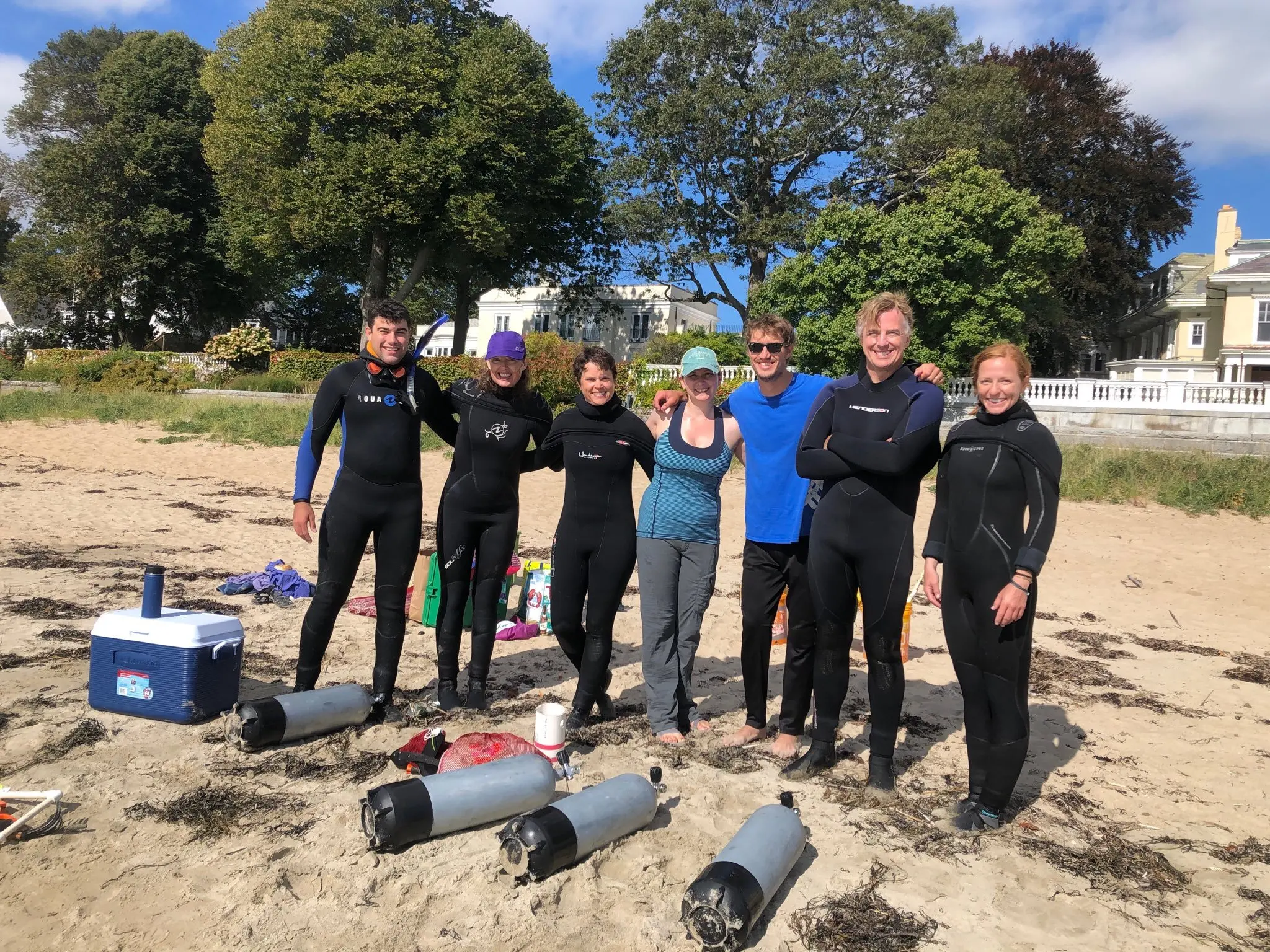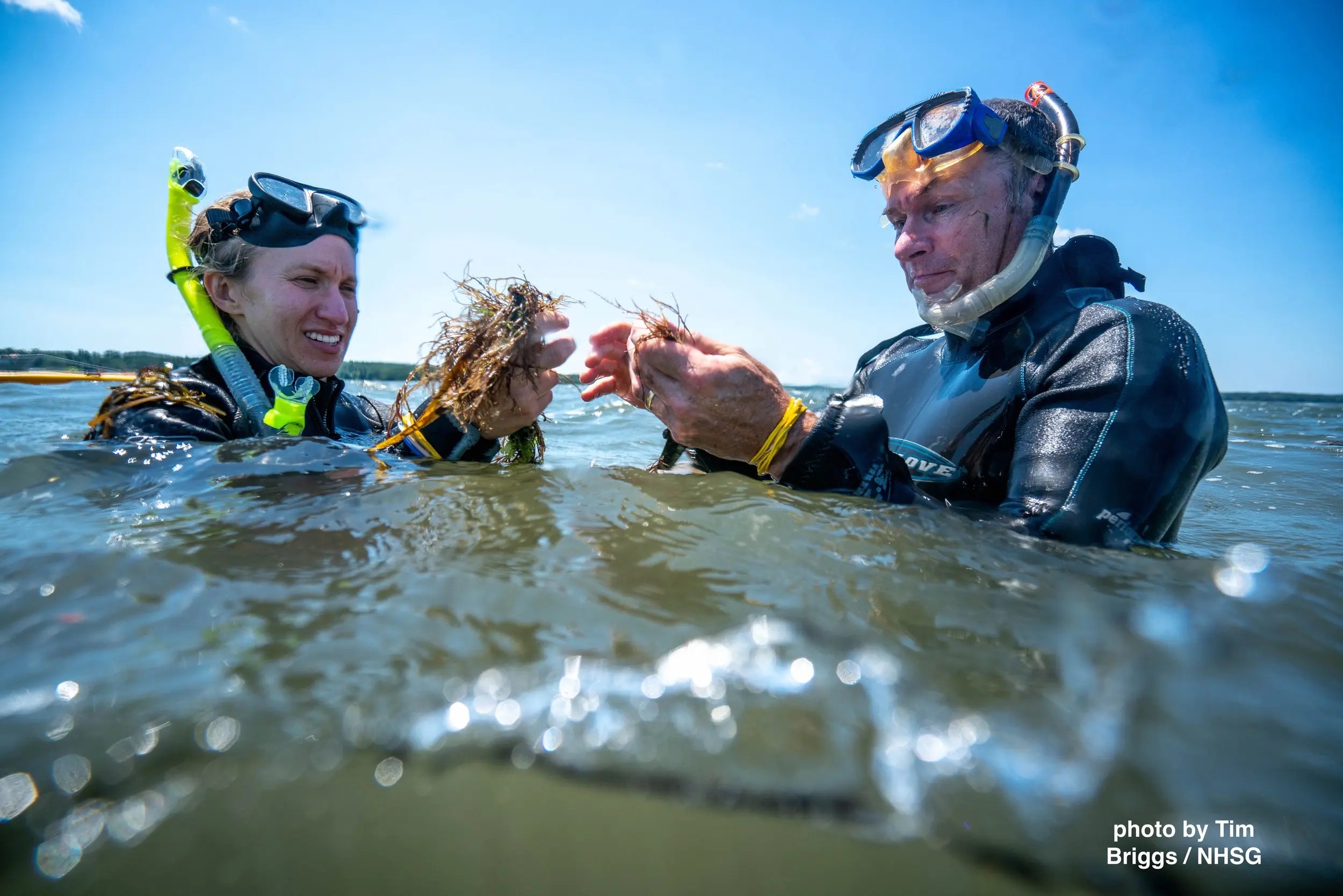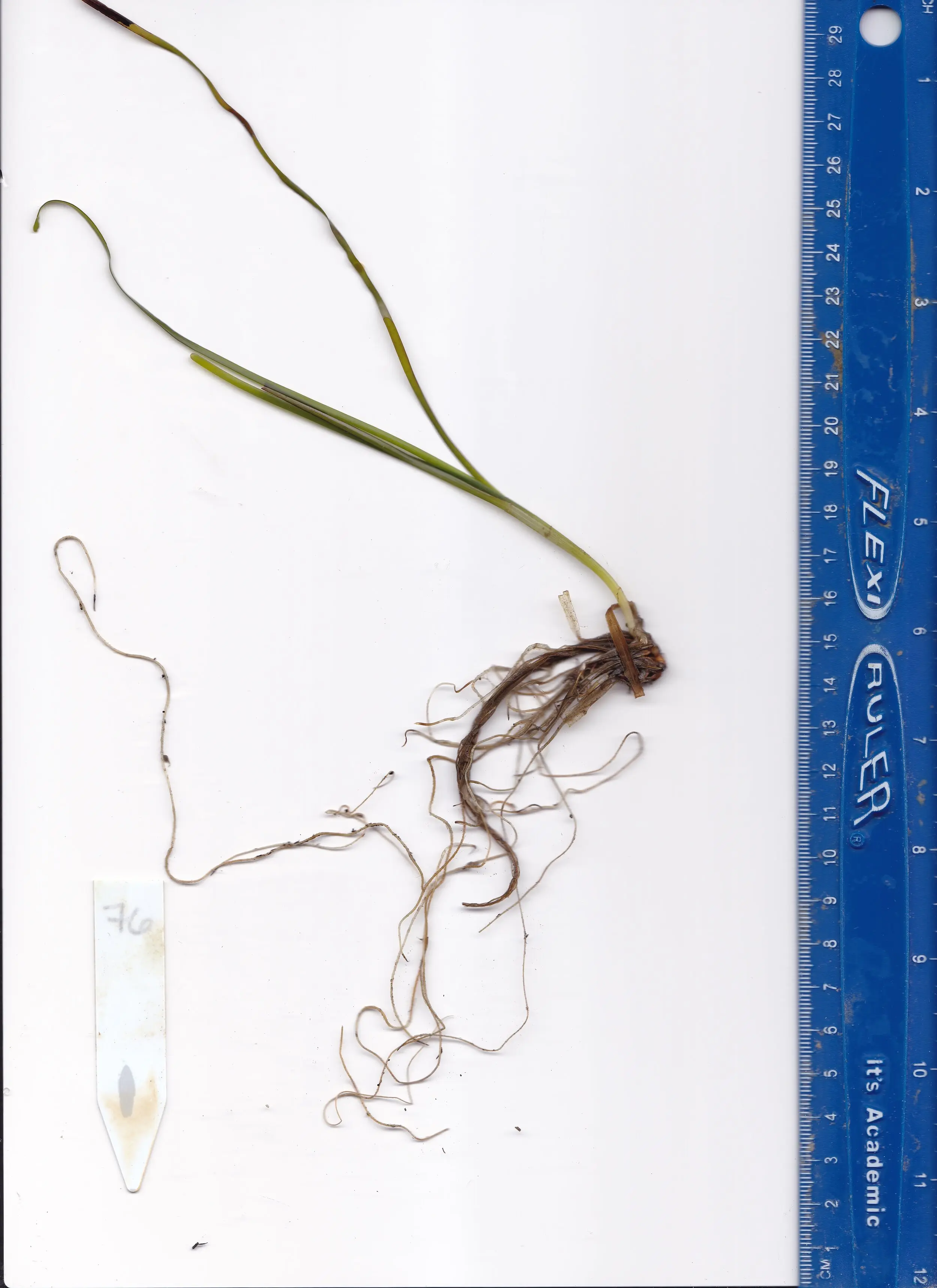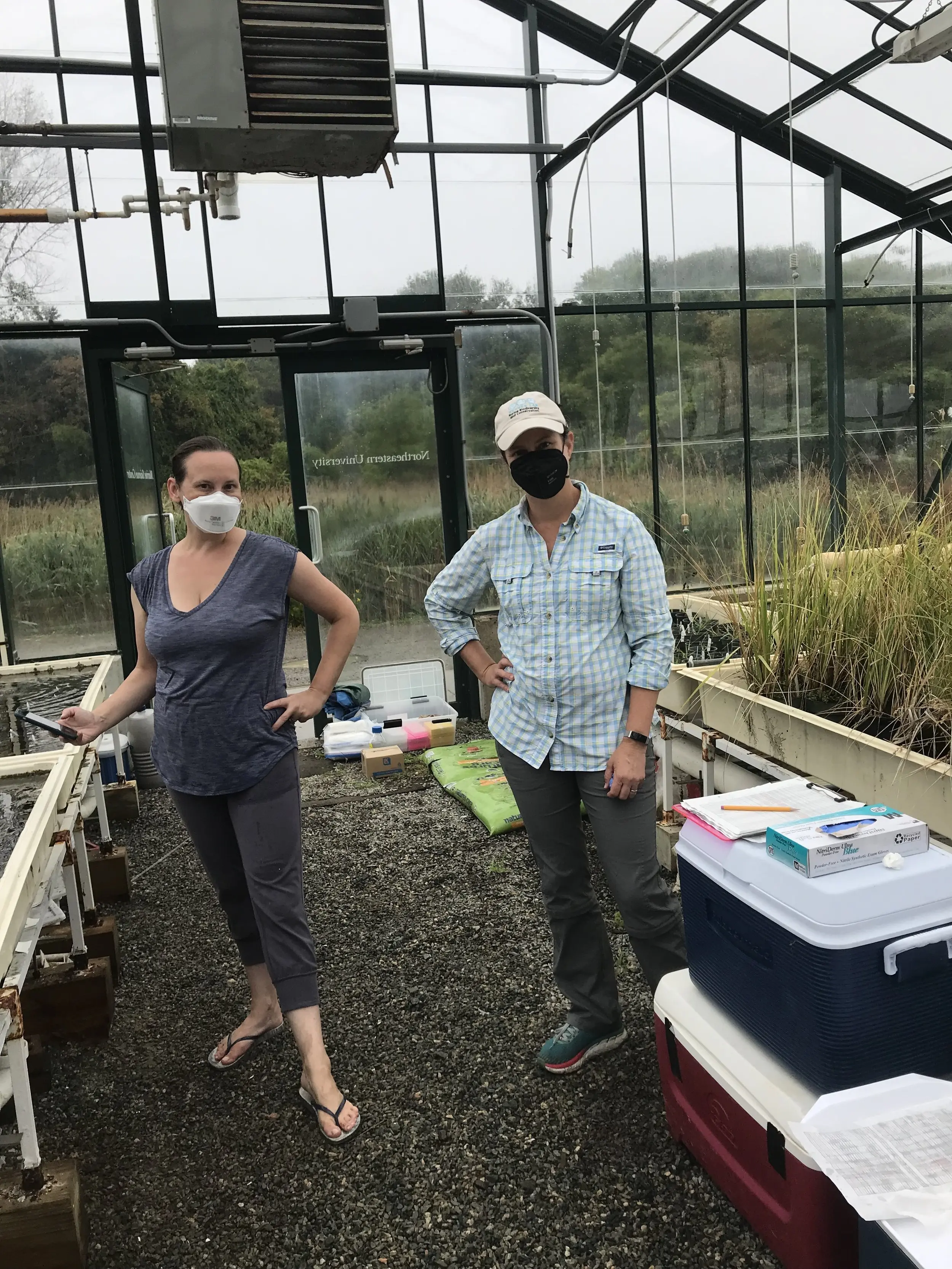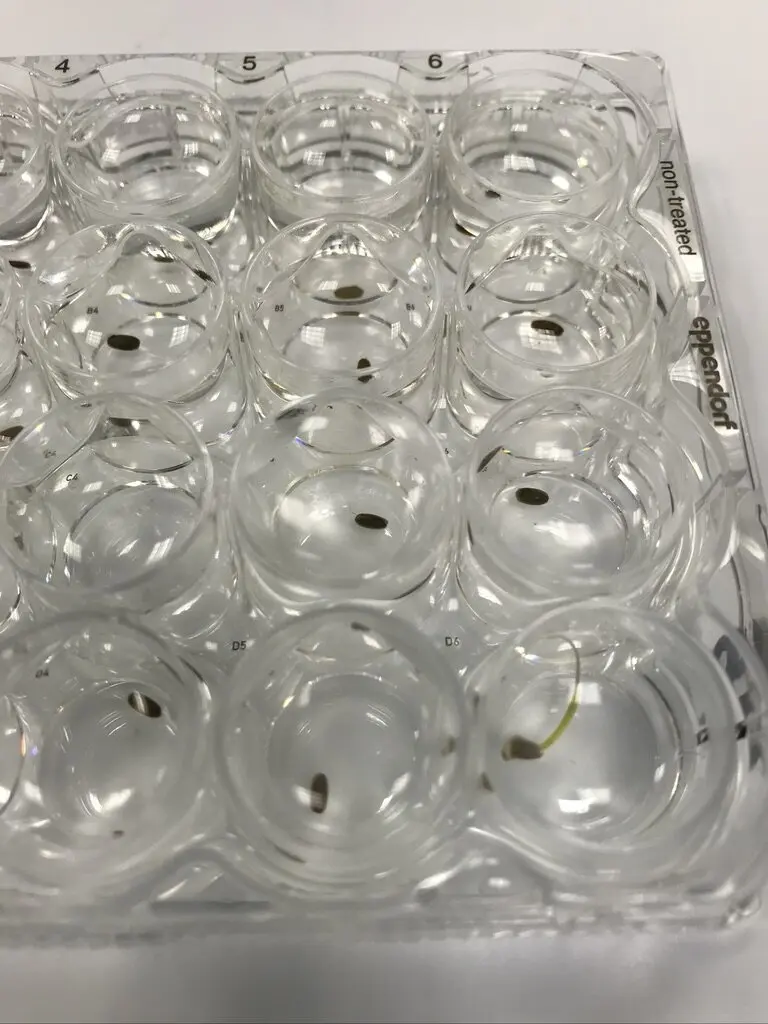Zostera marina (eelgrass) is a marine angiosperm, a flowering plant that can be found from the intertidal zone to depths of ~5-6 meters. Eelgrass forms highly productive underwater meadows that sequester carbon, stabilize shorelines, and support a rich and diverse ecological community, including the juveniles of many commercially important fish and invertebrate species. Unfortunately, eelgrass and the valuable ecosystem services that it provides are threatened by multiple stressors linked to coastal development and climate change, so understanding the processes that determine eelgrass distribution and abundance has become an area of great practical concern.
Causes and consequences of genetic diversity in Zostera marina
Experimental work in seagrass systems has shown that more genetically diverse populations are more productive and better able to withstand and recover from environmental disturbances, like temperature extremes and grazing. Like terrestrial grasses, eelgrass reproduces clonally (producing new shoots from underground rhizomes), as well as sexually (via flowers and seeds), and the frequency and success of clonal and sexual reproduction influences the genetic diversity of the larger meadow. We’re working to understand the processes that generate genetic diversity in Zostera marina, and how and why these vary among locations. This includes using microsatellite markers to do ‘paternity tests’ on developing seeds to ask basic questions about pollination in the sea (how far does eelgrass pollen typically disperse? Is there evidence of pollen limitation? Pollen competition?). We are also exploring how spatial patterns of sexual reproductive effort map onto spatial patterns of adult diversity. In those areas where there’s a disconnect (e.g., lots of seeds produced but no recruitment of seedlings), we’re testing possible reasons why – these include seed predators or pathogens, hydrodynamic effects (burial or loss), or competition with adults.
Microgeographic differentiation and local adaptation
One of the ways that populations can persist across environmental gradients is via local adaptation, such that individual genotypes possess traits that ‘match’ their local environmental conditions within that gradient. Dispersal and gene flow can counter local selection; thus, over small spatial scales, selection is typically thought to instead favor phenotypic plasticity or ‘generalist genotypes’ with broad physiological tolerances. However, increasing evidence shows that local adaptation can occur over microgeographic scales, suggesting that either selection is stronger, or dispersal more limited, than we often assume.
Preliminary data suggests that Z. marina seeds collected from across the depth gradient may differ in key traits related to timing of germination. The possibility of small-scale local adaptation in Z. marina is particularly interesting because this species represents one of the best-documented examples of the positive ecological effects of genetic diversity (see above), and while local adaption generates/maintains diversity among selective environments, it erodes diversity within them. How the evolutionary processes that create and maintain small-scale genetic diversity in natural Zostera populations interact with those that act to reduce it (e.g., selection) is unclear. With collaborators Drs. Randall Hughes (NEU), Torrance Hanley (Colby College), and Eric Sotka (College of Charleston), and funded by the National Science Foundation, we are testing for local adaptation to depth in Z. marina, and exploring how both negative frequency-dependent selection and directional selection may shape seed/seeding performance across the depth gradient. This work involves using high-throughput genomic techniques along with reciprocal transplant and common garden experiments with seeds in the lab and field.
What ‘goes with the flow’? Fluid dynamics, propagule dispersal, and eelgrass genetics
Sexual reproduction has important implications for eelgrass demography as well as both short- and long-term resilience to environmental change. While hydrodynamic feedbacks between eelgrass and abiotic conditions (e.g., water clarity) are known to be important to Z. marina’s persistence, the effects of hydrodynamics on eelgrass reproduction remain poorly understood. With collaborators Drs. Tom Lipmann, Tracy Mandel, and Theresa Oehmke at UNH, and working closely with the conservation organization PREP, we have begun exploring the reciprocal links between hydrodynamics, reproduction, and the genetic diversity of eelgrass in the Great Bay Estuary, an area that has shown considerable recent eelgrass decline. This project is funded by New Hampshire Sea Grant. Our goal is to characterize the genotypic and allelic diversity of Z. marina within and across long-term monitoring sites that span the Estuary, and to use a combination of (a) fine-scale field and laboratory experiments of fluid-vegetation-sediment interactions and (b) large-scale numerical hydrodynamic modeling to explore how fluid dynamic processes (e.g., bed shear stress, vertical mixing, and dispersion of propagules) may both drive and respond to eelgrass demography. Importantly, this project will provide the first comprehensive genetic survey ever conducted on eelgrass in the Great Bay Estuary; it will establish an essential baseline for ongoing genetic monitoring and help to inform future eelgrass restoration.
